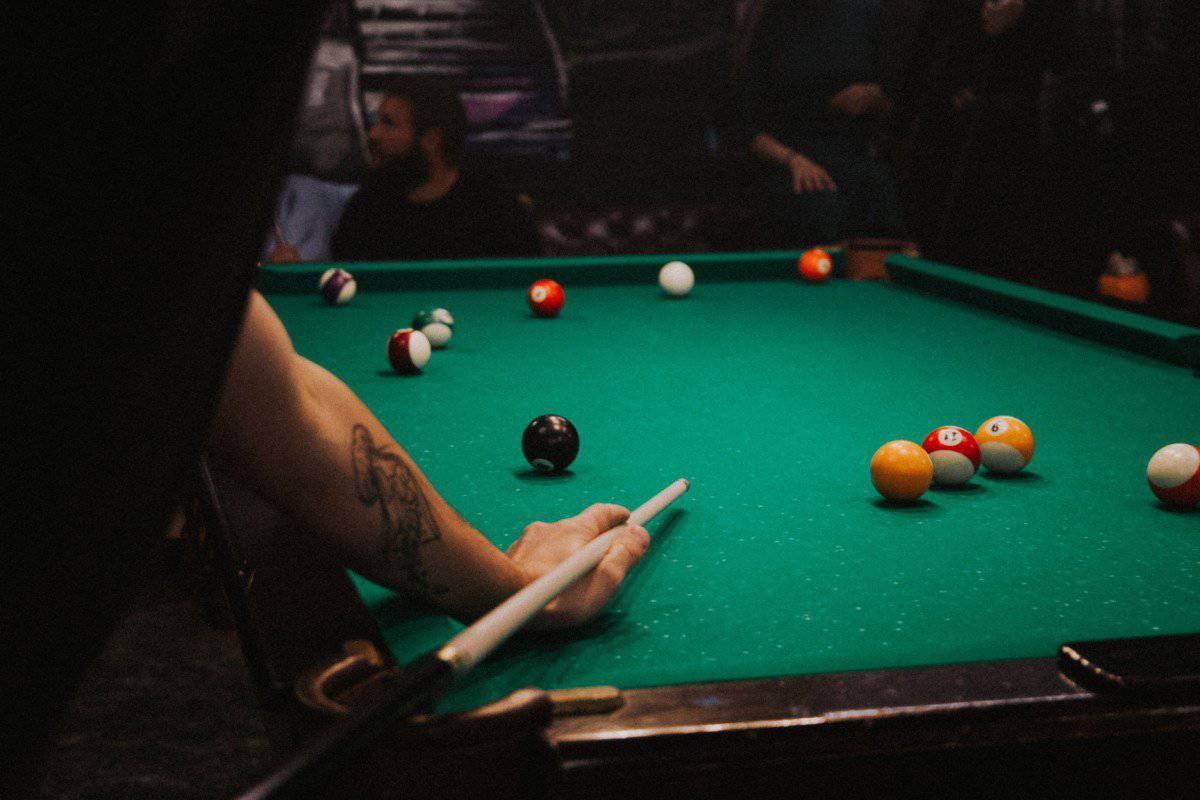You want to buy a good pool table for your game room. The idea is to fine-tune your pool game at home and play better in league tournaments at the pool hall. But you get sticker-shock when you go shopping for a table. Why do pool tables cost so much?
Pool tables cost so much because of their:
- Size
- Quality of construction
- Types of material used to construct them
As you think about how low you want your bank account to go, know that facts, not a sales pitch, will determine a wise decision. Keep reading to find out some of the things to consider when you spend your money on a pool table.
How Much Is a Good Pool Table?
If you haven’t seen the price tag on pool tables, you may be surprised.
Here’s how much pool tables typically cost:
- An economy table: $600 – $1200
- A midrange table: $1,000 – $4,000
- A high-end table: $15,000 or more
Different prices often reflect the level of playing skill you can attain.
Size Does Matter
As a rule, 4.5’ of space is the minimum amount necessary between a pool table and walls. If your game room is small, a bar-size pool table, or 7’ by 3.5’, might be your best choice. A small table will be cheaper than a larger table, of course. However, it might not be in your best interests to buy one. Why does size matter for pool tables, though?
Bar pool tables are not constructed to last like larger pool tables. Little tables and small prices equal reduced quality. Chances are, a bar table will not make good family heirlooms. The reduced size of a bar room table also means the “feel” of the table will be different from a larger table.
Size May Determine Tournament Skills
Bar table game skills can be challenging to transfer to larger pool tables. Typical tournament tables are 8’ by 4’. These tables are often called regulation tables, but “regulation” means nothing more than the table must have a 2:1 ratio between length and width.
Tournament tables are bigger and often more expensive than bar tables, but their costs are determined more by the quality of their construction and material specifications than their size. An economy tournament-sized table may even cost less than a well-made bar table.
A professional pool table is 9’ by 4.5’. These tables are the largest, most expensive, and built with a quality that produces the most challenging gameplay.
A Better Built Table Is a More Expensive Table
Typically, better made products will cost more for the time that went into creating the product. This is no different when it comes to pool tables.
A quality pool table will:
- Have “post” or “perfect” legs. Perfect legs are solid pieces of wood from the slate down to the bottom of the leg. Each leg will be attached to the cabinet with four screws or bolts and nuts.
- Have at least three pieces of wood across its width under the slate. The wood will resemble a 2” by 6” set on its side, be hardwood, and provide a sturdy, durable foundation for the slate top.
- Be handcrafted. Hand-etched wood, hand-stained, and hand-waxed may not affect gameplay, but they are aesthetically pleasing.
Let’s go over each of these points below so you can tell if the pool table you’re looking at is good quality for the price.
The Legs
Two-piece legs and legs attached with single nuts and bolts are elements of cheaper tables. They reduce the durability of a table. They will be unable to bear the table’s weight, especially if players are leaning on it during gameplay. Eventually, the legs will loosen, and the attachments will wear out completely.
The Underside Support
Tables that support the underside of slate tops with flat wood pieces or beams made from synthetic materials will eventually reduce gameplay and even cause the slate to crack. Once the support for the slate begins to sag or warp, the playing surface will no longer be flat. It’s all downhill from there – or uphill – it depends on where you are trying a shot.
The Woodworks
Exotic hardwoods, elaborate etching, hand-stained, and hand-waxed tables look good, but you can save money by doing without those options. Plain, solid oak or walnut tables, mechanically stained and waxed, will play as well as the more expensive kind.
Is Your Pool Table Made Of Premium Material?
It isn’t possible to judge the quality of some materials in a pool table. The cabinet, legs, and felt can be examined, but the slate, cushions, and rails are hidden, and the materials you cannot see will significantly impact gameplay.
Check Out the Wood
Let’s start with the things we can see. Hardwood is the best material for the legs and cabinet. It provides durability. Of course, it adds to the cost.
Feel the Felt
The felt on pool tables is very important when determining the quality.
Balls will roll fast or slow over it, depending on what it’s made of:
- The best felt is worsted, wool woven into small tight strands. However, while it makes for excellent gameplay, it is expensive and wears quickly. Then, the wear spots create unpredictable ball action.
- Blending wool with nylon solves the problem of wear and reduces cost. Speed is sacrificed, but only the best professionals will ever notice.
Felt covers the most critical part of a pool table: the slate top. Cheaper tables will have tops constructed from wood or a synthetic material. Those tops will be prone to warp. Some tops also may dent if a ball is dropped on them.
Slate Is a Solid Buy
Slate is a rock that is precisely cut to size and finished with a smooth, flat surface. Natural slate is the mark of a good table. The thickness of the slate also determines the price of a table.
¾ inch slate is the typical thickness for pool tables. Better tables sport 1 inch or even 1¼ inch thick slate. Many tables have three pieces of slate with the spaces between them filled with glue or beeswax. More expensive tables will be constructed of three pieces cut from the same piece of rock.
Not All Rails and Cushions Are the Same
The rails are the edges of the playing surface, also covered by cushions and felt. Again, hardwood is the material used for the rails on the best tables, and the best rails are constructed with three layers of contrasting grain to prevent warping.
Pool balls bounce and ricochet around the table off the rail cushions. Some manufacturers try to reduce the cost of the cushions by blending synthetic materials, often clay-like substances, with rubber.
Rail cushions dry out with time, lose their bounce, and become “dead rails.” Natural gum cushions produce better bounce and will last for the life of a table. K66 cushions are the most popular. Ask for them.
Conclusion
There you are! Time to go shopping. Just remember, if your pockets aren’t deep enough for the table you want, it may be better to wait. Spending more for a table your children remember you for and fight each other to have in their game room years from now is better.

